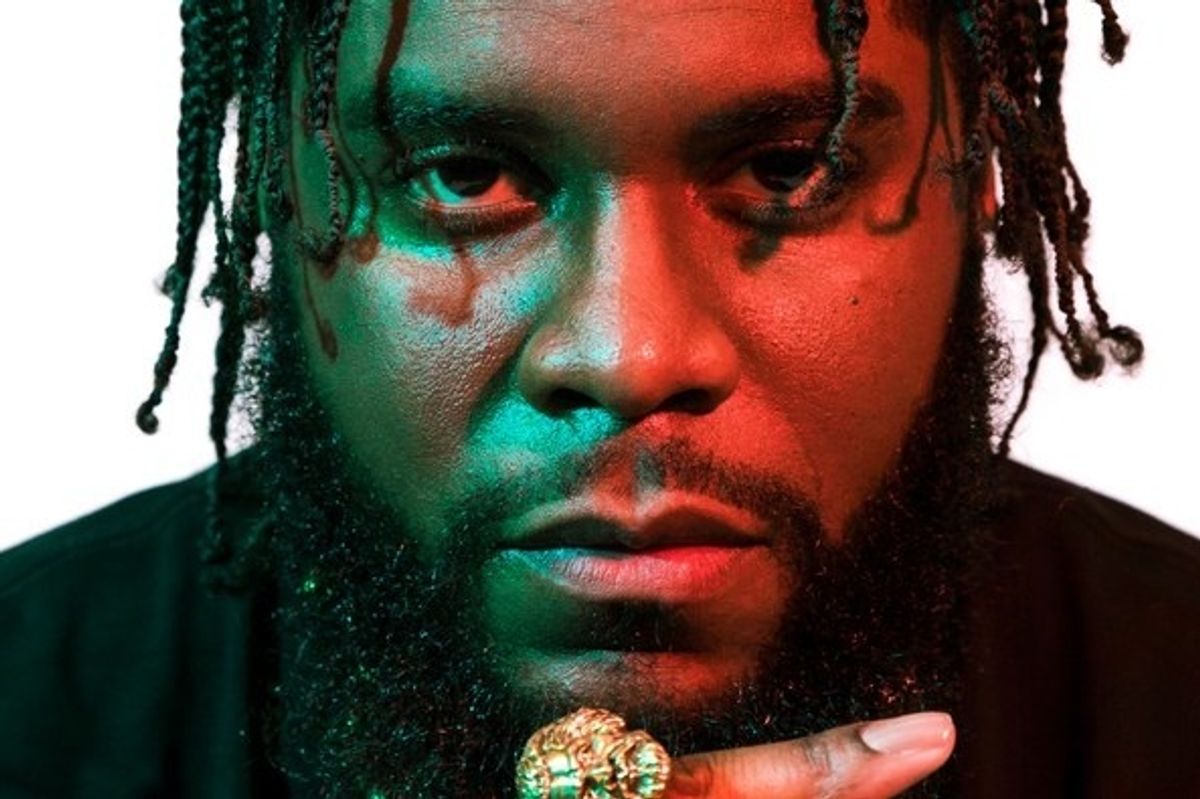"Look Mom I Can Fly" Is a Win for Travis Scott Fans—and No One Else
The 28-year-old rapper's new Netflix documentary is a rare and personal (albeit sloppily executed) glimpse into the life of a superstar.
Travis Scott AstroWorld Festival
Love him or hate him, we can all agree on one thing: Nobody knows how to hype up a crowd quite like Travis Scott.
That's why it's far from surprising to see that his Netflix documentary, Look Mom I Can Fly, has garnered a great deal of attention. The 85-minute film only reinforces Scott's reputation as a world-class performer. In addition to numerous heartfelt clips of impassioned fans discussing what Scott's music means to them (many of whom say that his music helped usher them through dark times and, in some cases, that it saved their lives), the movie is comprised of awe-inspiring moments in which Travis Scott is able to command enormous crowds to go wild at his concerts while still connecting with them on a deeply personal level. This is a rare ability that few artists ever manage to cultivate to the same effect—even less frequently does this happen at such a relatively early phase in a musician's career. There is clearly something special about Travis Scott, who is not quite as crazy about being in the public eye as some of his peers, which makes such an in-depth documentary about him a welcome glimpse into the rapper's personal, creative, and professional life.
The film includes decades of footage. From home movies of Scott's childhood to scattered clips of his astronomical rise to fame over the last few years, Look Mom I Can Fly is essentially a collage of personal and professional milestones. We are brought into the doctor's office with Scott and Kylie Jenner to see an ultrasound of the couple's baby, Stormi. We follow Scott around on tour, get to see plenty of never-before-seen live footage and behind-the-scenes moments in which his meticulous approach to live shows is displayed with candor. We are invited into the studio with Scott and his crew during the recording sessions of his breakout album, Astroworld. And we follow him through a tumultuous night of three Grammy upsets in 2018. This unflinching and candid approach makes Look Mom I Can Fly a refreshingly authentic and honest portrayal of a celebrity—something that is exceedingly uncommon in today's hyper-mediated social media landscape.
The one downside of the film's fragmented nature, however, is that it often feels a bit disjointed and disconnected. There is no readily discernible narrative throughline. Sure, there is the story of Scott's rise to superstardom and his various achievements and obstacles along the way, the birth of his daughter is briefly touched upon, and the entire movie is thematically centered around Scott's lifelong love of amusement parks and music in light of Astroworld; but, the jigsawed nature of how all of these elements are presented leaves much to be desired in the way of cohesion. After a while, it begins to feel less like a behind-the-scenes look at one of rap's biggest names and more like an hour-and-a-half long Instagram story.
Its not quite clear what viewers are supposed to take away from the movie—especially if you aren't already a big Travis Scott fan. Large portions of it feel somewhat self-indulgent and redundant. Instead of elaborating on some of the personal threads introduced throughout—perhaps via interview or some kind of off-the-cuff conversation—the movie merely presents events, rapidly moving onto something unrelated from one frame to the next.
Look Mom I Can Fly is truly a gift for the hundreds of thousands of Travis Scott fans around the world, but it's something of a disappointment as far as documentary film-making is concerned. When you are making a film in a genre dominated by the likes of Martin Scorsese (and more recently lit aflame by the critically acclaimed Beyonce music doc, Homecoming), the bar is set extremely high. Look Mom I Can Fly may not go down in history as one of the greatest music documentaries, but it is an interesting watch nonetheless—and it's required viewing for anyone who likes Travis Scott's music.
- Now in Theaters: 5 New Movies for the Weekend of May 17th ... ›
- Adventures In Dating—Spotlight On Craigslist Missed Connections ... ›
- 90 Shades of Red—Every Taylor Swift Song Ranked, From Worst to ... ›
- Adventures In Dating—Spotlight On Craigslist Casual Encounters ... ›
- Adventures In Dating—Spotlight On Zoosk - Popdust ›
- Adventures In Dating—Spotlight On Date A Trekkie - Popdust ›
- Adventures In Dating—Spotlight On Pink Cupid - Popdust ›
- Look Mom I Can Fly ›
- Review: Travis Scott's film, 'Look Mom I Can Fly,' takes viewers on a ... ›
- Travis Scott: Look Mom I Can Fly (Netflix) Review | Ready Steady Cut ›
- Travis Scott Hosts Premiere of Netflix Doc 'Look Mom I Can Fly' ›
- Travis Scott's 'Look Mom I Can Fly': the best moments in the chaotic ... ›
- Watch Travis Scott's 'Look Mom I Can Fly' Documentary Trailer ... ›
- Travis Scott's 'Look Mom I Can Fly' Documetary Is At Its Best When It ... ›
- Travis Scott: Look Mom I Can Fly Reviews - Metacritic ›



